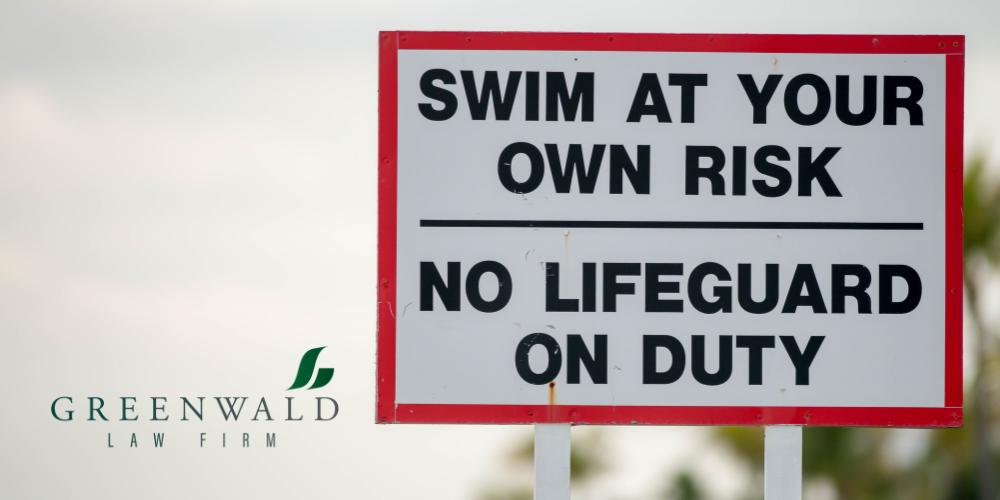What Does Assumption of Risk Mean?
Some personal injury cases are very cut and dry: someone acts negligently and causes someone else to suffer from injuries. Most injury cases, however, are much more nuanced than that. One facet of personal injury law is the assumption of risk doctrine, which can be used to help negligent individuals avoid liability in a personal injury case.
Risk assumption requires expert legal counsel to successfully argue against it. If you have been injured in an accident, you should hire an experienced law firm who can help you with your case. Shreveport personal injury lawyer Joseph W. Greenwald, Jr. is prepared to help you recover compensation for your injuries–call (318) 219-7867 to schedule your free consultation today.
Assumption of Risk Definition
Assumption of risk law doctrine is a legal defense that can be used in a negligence claim. Assumption of risk argues that the plaintiff (victim) was engaging in an inherently dangerous activity, making them partially responsible for their own injury.
In personal injury cases, the defendant (negligent party) can use the assumption of risk legal doctrine to prove that they were not solely responsible for the plaintiff’s injury and, therefore, not solely responsible for the damages the injury caused. When used properly, an assumption of risk defense can cause a plaintiff to only receive a portion of the compensation they deserve or cause them to lose their personal injury case entirely.
Understanding assumption of risk can be a little difficult, so let’s look at an example. In a motor vehicle accident, if the plaintiff is hit by a car running a red light, but the plaintiff was texting and driving at the time of the accident, the other driver could use assumption of risk to argue that the plaintiff was also partially responsible for the accident.
Types of Assumption of Risk
No civil lawsuit is the same as another, so the circumstances surrounding the injury can change the type of risk assumption involved. Assumption of risk comes in a few different forms, including primary and secondary assumption of risk, as well as implied and express assumption of risk. Below, we’ll explore the different types of assumptions of risk as well as how they can be used to decrease the percentage of a defendant’s negligence.
Primary Assumption of Risk
Primary assumption of risk involves any situation in which someone engages in a dangerous activity when they know that no one else is responsible for their safety. The most common example used to describe this type of risk is when someone engages in organized sports. Even though people who play contact sports are at risk for serious injuries like spinal cord and brain injuries, since they are willingly putting themselves at risk, they are responsible for their own injuries.
Secondary Assumption of Risk
Secondary assumption of risk is when a person is engaging in risky activities, but someone else had a responsibility to protect them from injury and failed to do so. For instance, if someone uses a product that they know has been recalled, and the product injures them in some way, the company that made the defective product may still be found partially responsible for the victim’s injuries.
In states that employ the comparative fault standard, secondary risk assumption is often used to help assign a percentage of blame to both the negligent party and the injured party that were involved in the accident.
Express Assumption of Risk
Express assumption of risk occurs when someone is injured after signing an express agreement, like a release waiver. If someone is injured at the gym while working out, but signed a waiver when they applied for their gym membership, they have likely already waived their rights to pursue legal action for any injuries they sustain while working out.
This form of voluntary assumption of risk can be hard to fight in court, but a skilled personal injury lawyer may be able to find loopholes within the waiver and help victims seek justice.
Using the gym example, if the victim suffered from catastrophic injuries because part of the gym’s ceiling collapsed, they might still be able to sue for compensation. If that release waiver didn’t expressly protect the gym owners from liability in the case of a roofing collapse, the owners may be found financially responsible for the victim’s injuries in a premises liability case.
Implied Assumption of Risk
Implied assumption of risk occurs when someone engages in an activity that is inherently risky and they do not sign a release waiver. The most common example of this is when people attend a baseball game. At a baseball game, there is an inherent risk that people in the crowd might get hit with a baseball, so fans give implied acceptance of that risk. Both primary and secondary assumptions of risk are forms of implied assumption.
Comparative Fault Standard in Louisiana
Comparative fault, also known as comparative negligence, is a legal doctrine that can be used in a personal injury lawsuit to assign blame to the involved parties of an accident. States like Louisiana use comparative fault to determine what percentage of the accident can be attributed to each of the parties involved in the accident.
Using the assumption of risk doctrine, even if the defendant is found negligent and is mostly to blame for the accident, the plaintiff would also be found negligent and partially to blame for the accident since they assumed part of the risk involved in the activity. In this case, if the plaintiff is found to be 20% responsible for their injuries, the comparative fault would only allow them to recover 80% of the damages they suffered.
Does Louisiana Use Assumption of Risk?
Yes, Louisiana uses assumption of risk and comparative negligence in personal injury lawsuits. This means that if someone files a personal injury case, and the defendant proves that they were willingly engaging in risky behavior, they may be unable to recover full compensation. Luckily, Shreveport injury victims can hire an experienced personal injury lawyer like Joseph W. Greenwald, Jr., who will know how to properly fight an assumption of risk defense.
If You Were Injured By Another’s Negligence, Call a Shreveport Personal Injury Lawyer From Greenwald Law Firm Today
If you are looking to file your own claim for compensation, the Greenwald Law Firm is here to help. With over 20 years of experience and a long history of successful case results, you can rest easy knowing it’s in good hands. We’ll closely investigate your particular situation and build a strong case against the parties responsible for your injuries. Call us at (318) 219-7867 or contact us online to receive a free consultation regarding your assumption of risk case.





